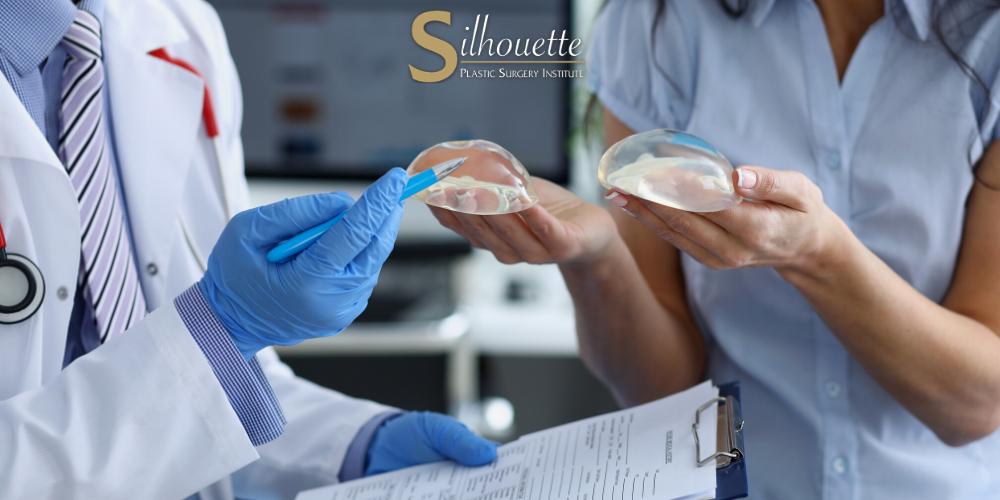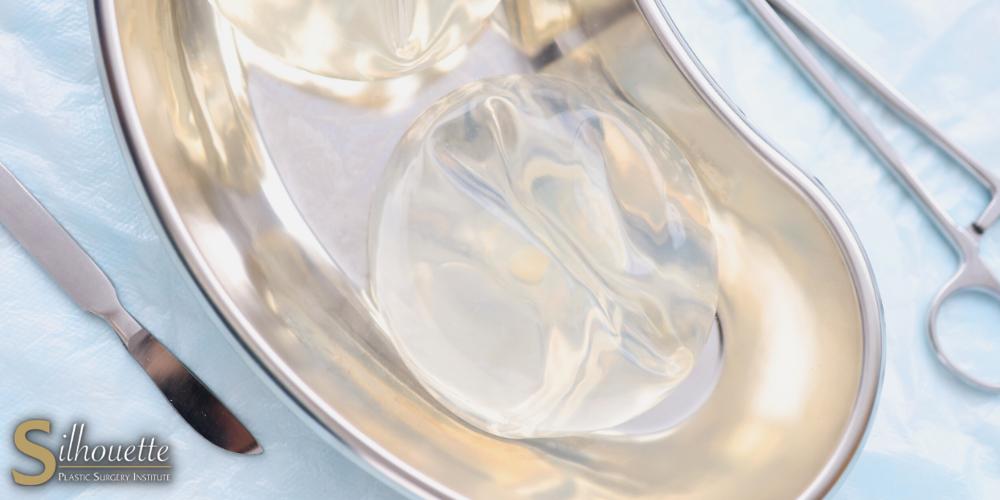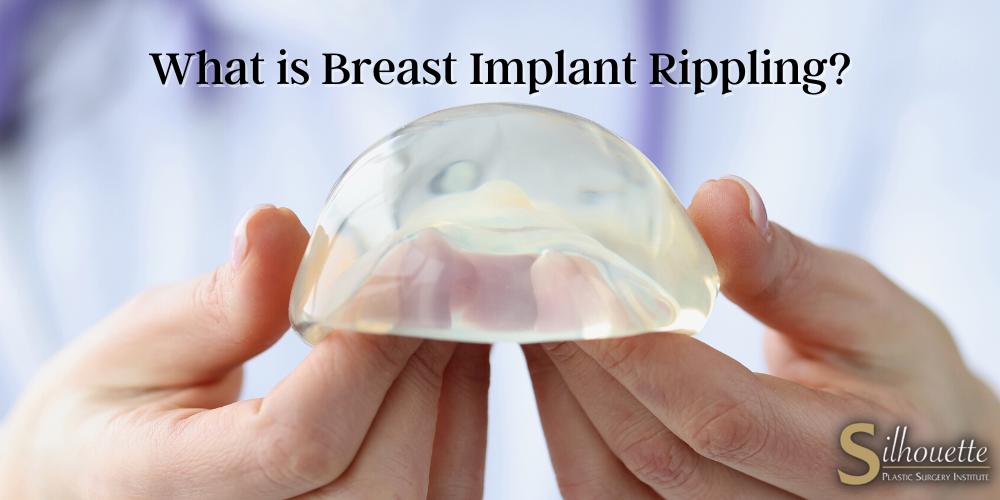Breast implant rippling is one of many aesthetic complications that patients can suffer from after a breast augmentation. Breast implant rippling occurs when one or both implants wrinkles or folds under the skin, creating a visible deformity. Luckily, this complication can be prevented and corrected. Below, board-certified plastic surgeon Dr. Daneshmand breaks down the best ways to correct this issue if it does happen, as well as how to prevent breast implant rippling in the first place.
If your breasts are a constant source of insecurity for you, you may benefit from one of our breast procedures, including breast augmentation, breast revision, breast lift, breast reconstruction, and more. Call 949-359-8397 to schedule an appointment at Silhouette Plastic Surgery Institute today.
What is Breast Implant Rippling?
Breast implant rippling is one of many possible complications that women can experience after their breast augmentation surgery. This complication is characterized by visible rippling from breast implants through the breast tissue. When most women see or feel rippling through the skin, what they’re seeing or feeling is usually the breast implant edges. Oftentimes, breast implant ripples are most noticeable near the armpits, especially when leaning forward.
Why Does Breast Implant Rippling Happen?
Because breast implants are designed to feel like natural breast tissue, they are naturally soft and squishy. This means that breast implants can easily fold and wrinkle inside the breast pocket, which can occasionally be noticeable through the skin.
In most cases, this is why breast implant rippling occurs:
- Poor Tissue Coverage: In general, thin women have a greater risk of implant rippling because they have less natural breast tissue. So if the implant edge does happen to wrinkle or fold, it can be very visible through the skin.
- Underfilled Saline Implants: During breast augmentation surgery, plastic surgeons have to fill saline implants with a certain amount of fluid to give the patient the desired shape and size. Saline implants that are underfilled have a greater risk of wrinkling under the skin.
- Small Capsule Size: If a plastic surgeon fails to create an appropriately sized breast capsule to fit the size of the implant, the patient could experience visible implant rippling.
- Saline Implant Volume Loss: Another possible complication that comes with saline implants is leakage or deflation. This lost volume usually isn’t dangerous because the body just absorbs the saline. But, it can lead to visibly deformities in one or both breasts, including rippling.
- Scar Tissue: Some patients develop thick scar tissue around their implants that is tethered to the skin. This scar tissue tethering can be very visible through the skin, especially during movement.
- Weight Loss: Patients who experience weight loss after their breast augmentation may see their implants ripple, especially if they lost a lot of natural breast tissue.
- The Breast Capsule is Sticking to Textured Implants: Most plastic surgeons don’t use textured implants anymore because of their risk to a type of breast implant-associated cancer, but also because they can stick to the breast capsule and cause wrinkling.
- The Implants Are Too Large: If your breast implants are too large for your breast capsules, then you could also experience rippling.
How to Correct Breast Implant Rippling
There are multiple surgical techniques that a plastic surgeon could recommend to fix breast implant rippling, depending on what’s causing the issue. The two best ways to fix this is through fat grafting or breast implant revision surgery.
Fat grafting (also called fat transfer) works best for patients whose implant rippling is caused by thin breast tissue. In this case, the plastic surgeon would perform liposuction on a fattier area of the body (such as the stomach or inner thighs), purify the fat, and then transfer these fat cells to the breasts.
If the rippling issue is caused by underfilling, small capsule size, implant leakage, scar tissue tethering, or implants that are too large, a plastic surgeon may recommend breast implant revision surgery. During this surgery, the surgeon may replace the implants, change capsule size, refill implants, or even change implant placement. It all depends on the specific issue and what the plastic surgeon feels is the best fix.

How to Avoid Breast Implant Rippling
There are a few ways to prevent this complication from happening in the first place. Most experienced surgeons will take these preventative measures to begin with so that their patients receive the best possible results. Still, it’s important to be aware of these preventative measures before you undergo breast augmentation surgery just in case you come across a surgeon who will do anything to take your money and run, without thinking about your health and wellbeing.
Breast Implant Profile, Width, and Size
Most patients don’t realize that breast implant volume (measured in cubic centimeters) is not the most important factor in having beautiful breasts. You must consider a variety of other factors as well, such as implant profile and width. Choosing the best implant size, profile, and width for a patient’s unique anatomy is crucial for a beautiful result, but also crucial for preventing rippling.
Implant width should be about the same, or a little smaller, than your actual breast width. If you have relatively thin breast tissue, your plastic surgeon should definitely request an implant width that’s on the smaller side. If a surgeon chooses the wrong width, patients can very easily suffer complications or an aesthetic result they don’t like. If implants are too narrow, the breasts will lack desired cleavage and upper pole fullness. Meanwhile, if implants are too wide, the implant edges are likely to fold or wrinkle. That’s why it’s so crucial to seek out a board-certified plastic surgeon, like Dr. Daneshmand, who knows how to give his patients the best possible results with little to no complications.
Breast implant profile refers to how far they “stick out” or project from the chest. You and your surgeon must choose the best type of round implants for your width and desired projection. Lower profile implants are generally described as flatter, wider, and rounder in the upper pole region of the breasts. Meanwhile, a higher profile implant will provide the most breast projection, but is on the narrower side.
Breast Implant Placement
The next most important thing that can prevent rippling is correct implant placement. Meaning – is the breast implant placed above or below the chest muscle? Implants placed above the chest muscle is called subglandular placement, while those placed below the chest muscle is called submuscular placement.
There is no right implant placement. It all depends on your unique anatomy, and partially on your lifestyle. If you have a small amount of natural breast tissue, your plastic surgeon may recommend that you have your breast implants placed under the chest muscle. This will provide more coverage if the implant does end up wrinkling. This type of placement is sometimes not ideal for athletes, because they may experience diminished strength in the chest muscles. However, if you already have a decent amount of natural breast tissue, your surgeon may feel comfortable enough to go with subglandular placement.
Breast Implant Type
Breast implant type also plays an important role in preventing rippling. Silicone gel implants are far less likely to cause rippling compared to saline implants. Some types of silicone implants, such as gummy bear implants, do not ripple at all. However, it’s important to note that gummy bear implants are textured, so choosing these implants means you have a higher chance of experiencing scar tissue tethering, which can show through the skin.
Before undergoing a breast augmentation, it’s always a good idea to discuss the pros and cons of saline implants vs. silicone implants with your surgeon. They will help you choose the best implants based on your body and your aesthetic goals.

Call Silhouette Plastic Surgery Institute Today
If you’re ready to feel confident about your breasts again, you’ve come to the right place. Dr. Daneshmand is a board-certified plastic surgeon who has extensive experience in all types of breast surgery, including breast augmentation surgery, breast revision surgery, breast reconstruction surgery, and so much more. Call 949-359-8397 to schedule an appointment at Silhouette Plastic Surgery Institute today.

